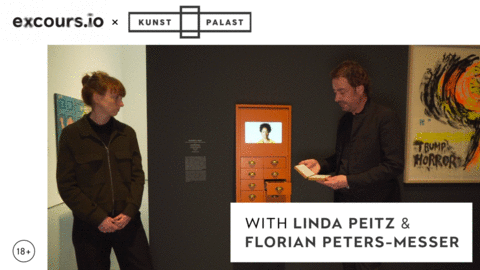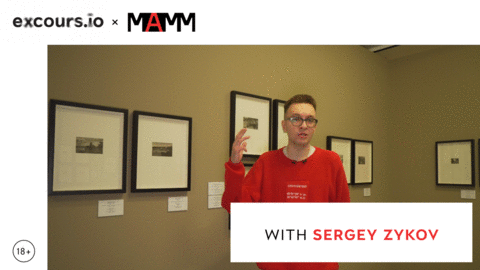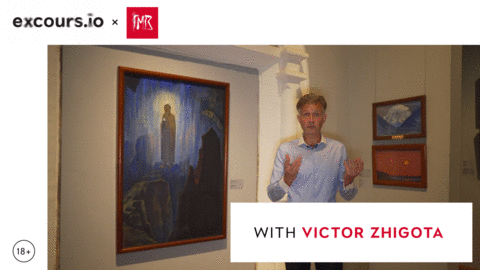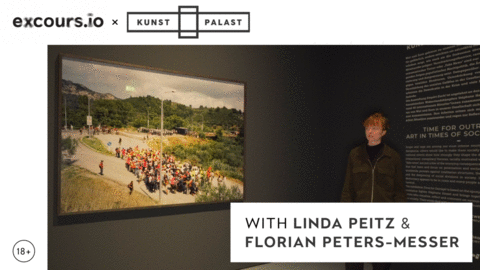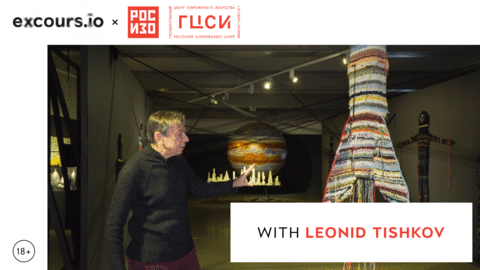Forward to the Past: Yokoo Tadanori’s Road to Hanshan and Shide
The exhibition Forward to the Past: Yokoo Tadanori’s Road to Hanshan and Shide presents artist Yokoo Tadanori’s compelling new paintings, inspired by the Tang-dynasty (618-907 CE) Zen monks Hanshan and Shide, alongside key works from his extensive artistic journey. Responding to the profound global shifts beginning in 2020, Yokoo retreated to his studio, developing his “moro-tai” (obscure style) to portray Hanshan and Shide, celebrated for their tousled hair, ragged clothes, and hearty laughter. This collection reveals how an artist’s personal introspection during times of societal change can lead to an unexpected connection with historical figures and artistic renewal, inviting visitors to consider the enduring power of creative resilience across ages.
Why should you watch this?
Yokoo Tadanori’s Haunted Museum
Yokoo Tadanori’s Haunted Museum presents a compelling exploration of the intrinsic connection between art and fear, featuring a diverse range of the artist’s works. Yokoo Tadanori has consistently pursued phenomena that remain invisible or unexplainable by science, a fascination rooted in his childhood experiences with profound darkness and mystical encounters in Nishiwaki. This deeply personal history informs much of his art, from his celebrated illustrations for the Complete Works of Edogawa Rampo to his paintings created since his “painter’s declaration.” The exhibition, designed with deliberately darkened spaces, encourages visitors to engage with their own ambivalent emotions of wanting to look yet fearing the unknown. It highlights art’s enduring capacity to interpret and express humanity’s primal responses to mystery and the unseen, fostering a reflection on these universal aspects of human existence.
Why should you watch this?
Curators in Panic
The exhibition Curators in Panic addresses the unpredictable realities of operating a contemporary art museum, presenting unique works by artist Yokoo Tadanori, who has continuously redefined painting since the 1980s. Rooted in the early 2020s — a period marked by the coronavirus crisis and logistical demands from the large-scale retrospective Genkyo Yokoo Tadanori — this show responds directly to the sudden absence of major holdings and the challenges of museum governance. Three participating curators, deeply familiar with the collection, selected their personal favorites not included in the tour, highlighting the profound existence of the artist’s full creative output. This perspective reflects the confusion of managing a cultural facility during a state of emergency. By adopting the curators’ viewpoint, visitors gain an opportunity to freely enjoy the viewing experience and rediscover the rich, constantly changing creative world of Yokoo Tadanori.
Why should you watch this?
Curators in Panic speaks directly to the uncertainties of our present, when cultural institutions and everyday life alike are shaped by disruption and absence. The film captures the uneasy humor of curators calling their own exhibition a “state of emergency,” a phrase that resonates far beyond the museum walls in a world still negotiating the aftershocks of the coronavirus crisis. Their candid voices, recounting both discoveries and setbacks, turn curatorial practice into a deeply human story of resilience and adaptation. Viewers are left with a striking reminder that art, even when interrupted or displaced, continues to create meaning and connection.
Yokoo Tadanori Collection Gallery 2021
The Yokoo Tadanori Collection Gallery presents a comprehensive view of the artistic world and deep influences shaping the practice of Japanese artist Yokoo Tadanori. This permanent space, established in 2021 within the Yokoo Tadanori Museum of Contemporary Art in Hyogo Prefecture, Japan, displays his original drawings, color proofs, and project designs. The collection offers insight into the cultural and historical contexts that fed Yokoo’s aesthetic, illuminating the wider network of artistic references he engaged with. Visitors can study archive materials and works by figures he admired, such as Francis Picabia and Giorgio de Chirico, revealing the sources that informed his output. The gallery ultimately encourages visitors to recognize the enduring dialogue between personal vision and international creative lineage that defines lasting contemporary art.
Why should you watch this?
The Yokoo Tadanori Collection Gallery reveals the surprising connections between Yokoo’s imaginative designs and the works of artists he admired, such as Picabia and de Chirico, showing how ideas travel across time and place. Scenes capturing his bold color proofs alongside delicate sketches create moments of both delight and contemplation, exposing the processes behind visual invention. By following the intersections of personal creativity and broader artistic currents, the film invites viewers to experience the thrill of discovery and recognize how enduring inspiration emerges from unexpected juxtapositions, offering a vivid reminder of the vitality of art across generations.
TIME FOR OUTRAGE! Art in Times of Social Anger | Postcolonialism
Can anger and rage be justified in a world riddled with oppression and inequality? Are these emotions destructive forces or vital catalysts for social change? As democracy faces crises and populism gains ground globally, these questions have sparked renewed debate. Contemporary artists have responded, using their work to navigate and challenge the pressing issues of our time.
The exhibition ‘Time for Outrage!’ in Düsseldorf explores these questions through six thematic blocks: Right-wing Shift, Trumpism, Protest, Postcolonialism, Feminism, and Discrimination. Across a diverse range of mediums — including installations, drawings, paintings, sculptures, photography, and video art — 40 international artists immerse viewers in the visceral realms of protest, social dissent, and public anger. The exhibition doesn’t just present anger as a raw emotion; it portrays it as a vehicle for dialogue, resistance, and empowerment in the face of systemic injustice.
A substantial portion of the works on display come from the collection of entrepreneur and collector Florian Peters-Messer, whose commitment to socially engaged art amplifies the urgent messages these pieces convey.
Why should you watch this?
Vasily Ulitin. Elegy
Vasily Ulitin. Elegy is a poignant exploration of memory and the human experience, showcasing contemporary artworks that delve into themes of loss and nostalgia. This compelling exhibition brings together a diverse array of artists, each offering a unique lens on the fragility of existence and the echoes of the past. Through striking visuals and thought-provoking installations, visitors are invited to reflect on the transient nature of life and the artifacts of memory that linger in our minds. The careful curation weaves a narrative that transcends individual perspectives, creating a shared space for solace and contemplation.
Why should you watch this?
This exhibition is an emotional journey that invites you to confront the depth of human experience through the lens of contemporary creativity. By showcasing artists who grapple with themes of memory, loss, and the passage of time, this exhibition resonates with anyone reflecting on their own stories. Each piece acts as a portal into personal and collective memories, encouraging introspection and dialogue. The thought-provoking installations challenge you to consider how we hold onto the past and the beauty and pain that intertwine in our lives. Whether you’re an art aficionado or simply curious, this guided tour offers a unique opportunity to engage with profound artistic expressions that linger in the heart and mind long after you leave.
Nicholas Roerich. Sanctuaries and Citadels
N.K. Roerich’s exhibition unveils over 80 captivating works inspired by his 1925 Central Asian expedition. With an extraordinary blend of majestic mountain landscapes, Buddhist monasteries, and formidable fortresses, Roerich crafts a compelling narrative of heroism and spiritual pursuit that transcends cultural boundaries. His pieces celebrate the sacredness of labor and the enduring human spirit, evoking a universal call to courage and resilience. Roerich’s unique style, characterized by what can be termed “epic realism,” draws upon his deep understanding of history, folklore, and religious traditions.
Why should you watch this?
N.K. Roerich’s “Shrines and Strongholds” resonates powerfully in today’s world, where themes of resilience, spirituality, and cultural identity are increasingly vital. As modern society redefines spirituality Roerich’s exploration of heroism and the sacred nature of labor offers a poignant reflection on the indomitable human spirit that transcends boundaries of faith and nationality. His majestic depictions of mountain landscapes and spiritual sites serve as symbols of hope, encouraging us to aspire for personal and collective growth. Roerich’s emphasis on courage and the potential for spiritual feats invites contemporary audiences to recognize the shared human experience and the transformative power of art as a catalyst for understanding. The exhibition not only honors Roerich’s legacy but also inspires a renewed dialogue about courage, identity, and our interconnectedness in the global narrative.
TIME FOR OUTRAGE! Art in Times of Social Anger | Protest
Can anger and rage be justified in a world riddled with oppression and inequality? Are these emotions destructive forces or vital catalysts for social change? As democracy faces crises and populism gains ground globally, these questions have sparked renewed debate. Contemporary artists have responded, using their work to navigate and challenge the pressing issues of our time. The exhibition Time for Outrage! in Düsseldorf explores these questions through six thematic blocks: Right-wing Shift, Trumpism, Protest, Postcolonialism, Feminism, and Discrimination. Across a diverse range of mediums — including installations, drawings, paintings, sculptures, photography, and video art — 40 international artists immerse viewers in the visceral realms of protest, social dissent, and public anger. The exhibition doesn’t just present anger as a raw emotion; it portrays it as a vehicle for dialogue, resistance, and empowerment in the face of systemic injustice.
Why should you watch this?
Augury of Cosmos
The exhibition Augury of Cosmos showcases the innovative works of contemporary artists, who masterfully blend traditional techniques with modern themes to explore the complexities of human experience. Through a diverse array of mediums, including painting and installation, viewers engage with the interplay of memory, identity, and the passage of time. Thought-provoking pieces challenge conventional narratives, encouraging a dialogue between the past and present. This exhibition not only highlights unique artistic vision but also serves as a reflection on the broader cultural landscape, making it a must-see for anyone interested in the evolution of contemporary art.
Why should you watch this?
Step into the transformative world of contemporary art at the exhibition Augury of Cosmos, showcasing the extraordinary work of artist Mikhail Slogunov. This immersive event delves into the intricate relationship between identity, memory, and the myriad forces that shape our perceptions of self and otherness. Slogunov’s evocative pieces challenge viewers to confront societal norms and personal biases, making it not just an exhibition, but a profound exploration of the human experience. With a diverse array of multimedia installations, the show encourages dialogue and introspection, inviting you to engage deeply with art that resonates on both emotional and intellectual levels.





